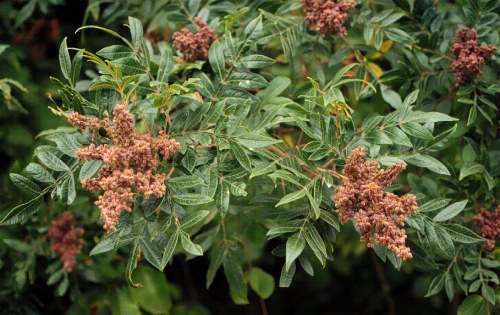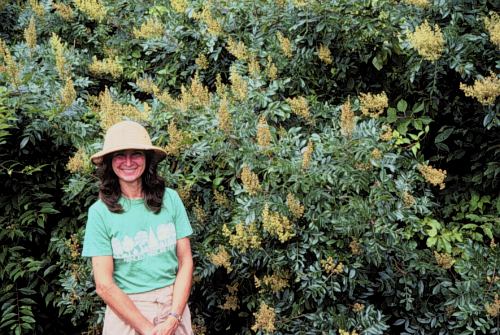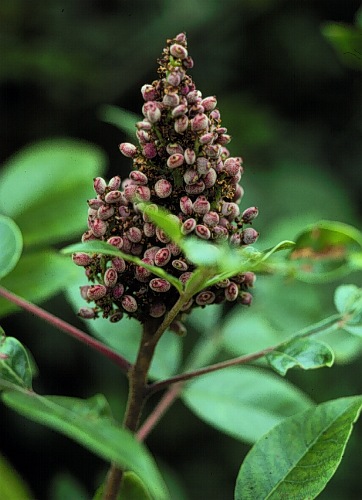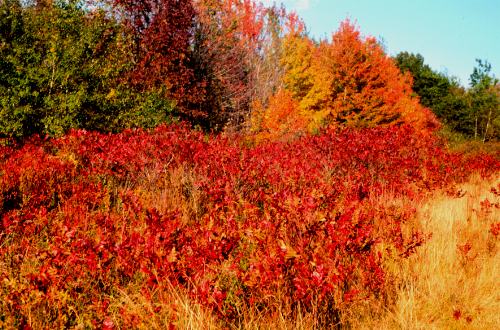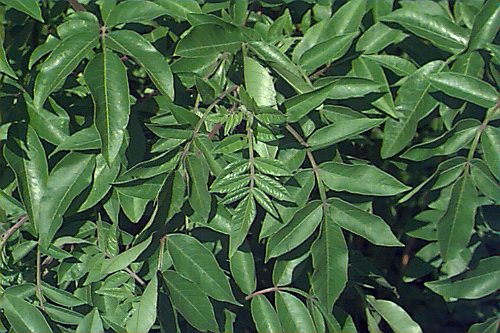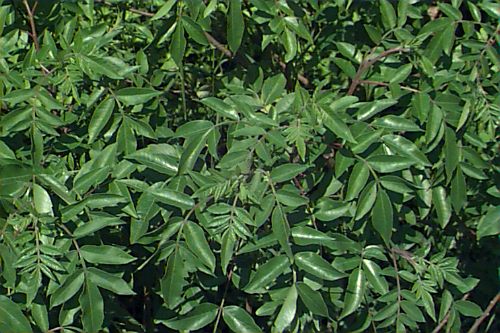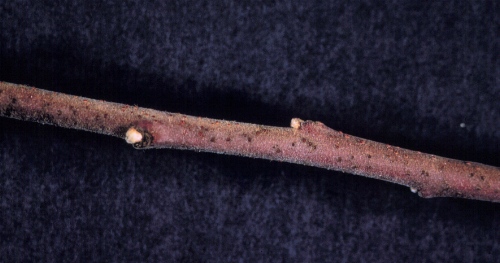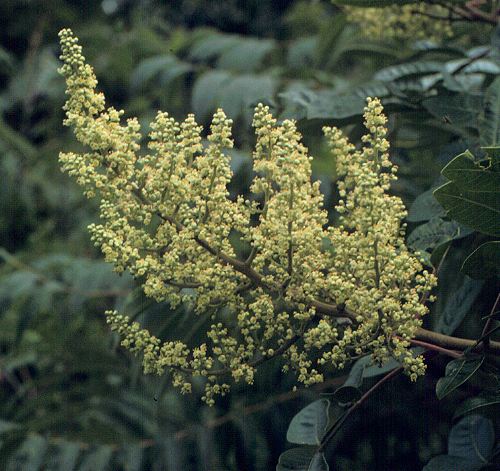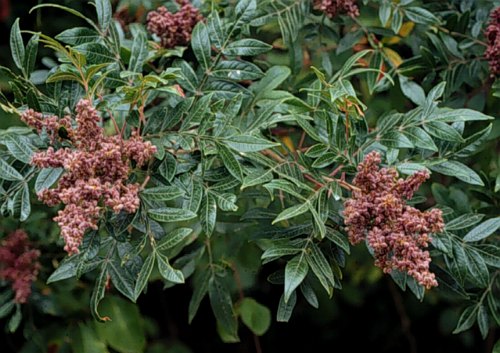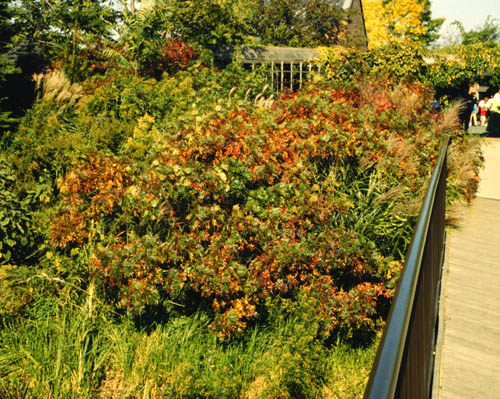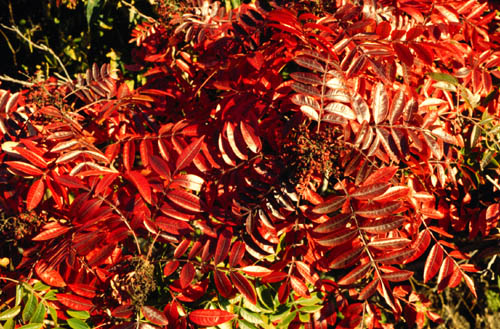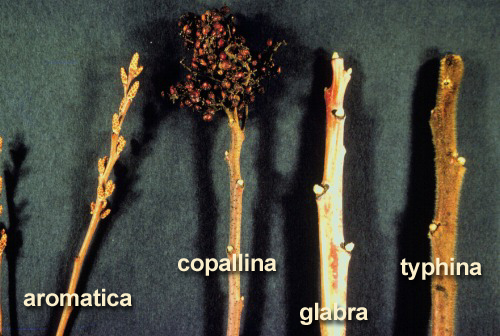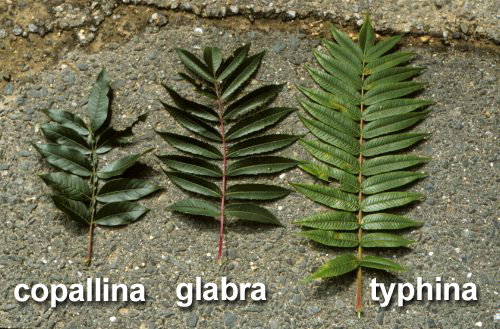Rhus copallina
Flameleaf Sumac, Shining Sumac
Anacardiaceae
ExpandHabitat
- native to eastern United States
- hardy to zone 4
Habit and Form
- a deciduous tree
- 20' to 30' tall
- equal spread
- dense in youth
- open, irregular crown
- crooked, spreading branches
- medium texture
- moderate growth rate
Summer Foliage
- alternate leaf arrangement
- deciduous leaves
- odd-pinnately compound leaves
- 6" to 12" long
- 9 to 12 leaflets
- ovate leaflet shape
- leaflets up to 4" long
- predominately entire leaf margins, some serrations towards leaf tip
- pubescent underside
- winged, pubescent rachis
- dark green leaf color
Autumn Foliage
- red fall color
- showy
Flowers
- dioecious
- greenish-yellow flowers
- blooms in July
- borne in terminal panicles, 4" to 8" long and half as wide
Fruit
- hairy, red drupe
- matures in September
- borne in terminal panicles
- showy
Bark
- reddish stems
Culture
- good in dry, rocky areas
- full sun to mostly shade
- prefers acidic, well-drained soil
- soil adaptable
- suckers
Landscape Use
- massing
- woods edge
- naturalistic areas
- bank covers
- for fruiting effect
Liabilities
- leaf spot
- rusts
- aphids
- mites
- scale
- suckers
ID Features
- odd-pinnately compound leaves
- pubescent reddish-brown buds
- u-shaped leaf scar
Propagation
- by seed
- by cuttings
Cultivars/Varieties
Several dwarf forms of this large, suckering shrub are known. 'Creel's Quintet' reaches 8' to 10' tall with a spreading, suckering habit. It is a female fruiting clone with good red fall color. Several other cultivars, including colored-leaf forms, may be on the horizon in the near future.
